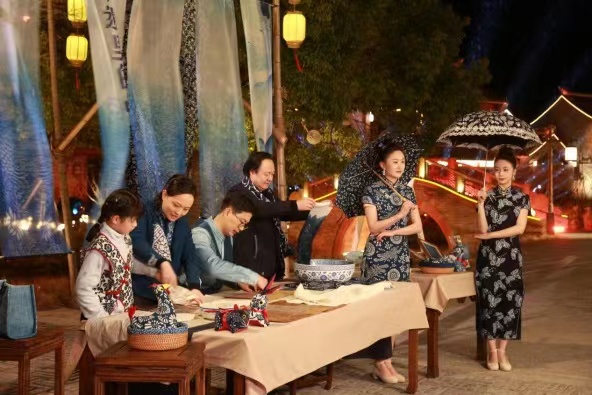Nantong blue calico printing and dyeing craft
Nantong in East China's Jiangsu province was a cotton textile base during the Ming (1368-1644) and Qing (1644-1911) dynasties, when its blue calico was popular across the country. According to local historical records, there were as many as 19 hand-dyeing workshops registered with the dyeing and weaving bureau at the time.

Nantong blue calico cloth. [Photo provided to en.nantong.gov.cn]
Folk craftspeople enrich the patterns of Nantong blue calico by learning traditional designs derived from paper-cuts, embroidery and wood carvings.
During the Ming and Qing dynasties, weaver girls and dyers were found in every local household, and dyeing workshops producing blue calico were scattered throughout every town.
Nantong residents still retain the blue calico printing and dyeing skills from the Ming and Qing dynasties. The blue dye is obtained from indigo plants, the roots of which are called "isatidis".

Models are dressed in cloth made of Nantong blue calico. [Photo provided to en.nantong.gov.cn]
After the indigo plant matures, it is cut and placed in a pond, and then fermented to make a black mud-like "dried indigo". It is then put into a dyeing vat and can be used for a long time.
The production process includes pasting paper plates, painting samples, engraving plates, oiling the plates, cloth scraping, dyeing, scraping ash, consolidating the color, cleaning, and drying.
Nantong blue calico is mainly used for bedding, sheets, package covering, tent eaves, pillow towels, scarfs, door curtains, and other practical applications. The printing and dyeing techniques were listed as a national intangible cultural heritage in 2006.







